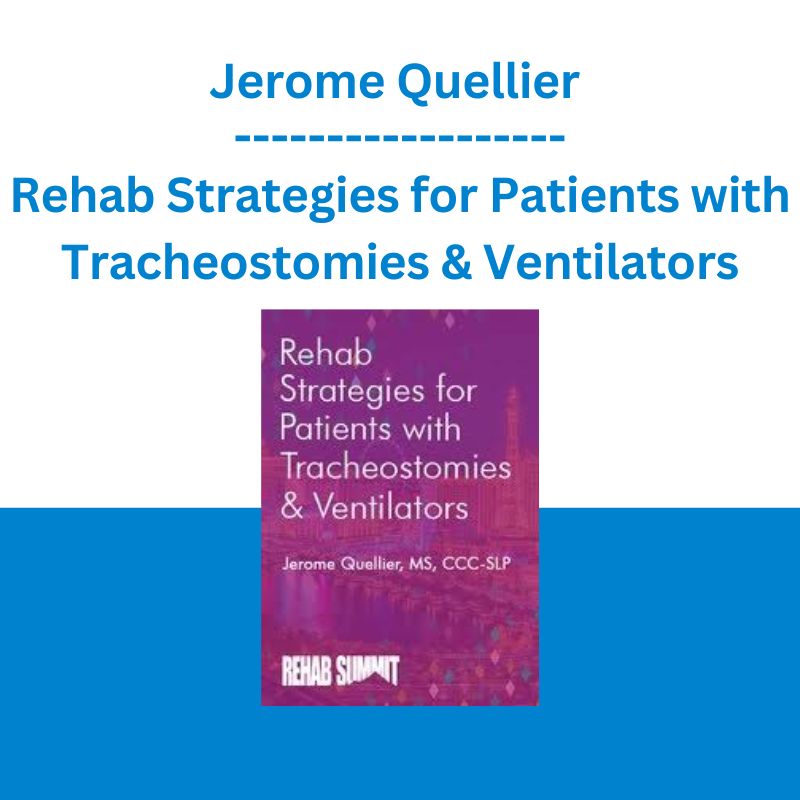*** Proof of Product ***
Exploring the Essential Features of “Jerome Quellier – Rehab Strategies for Patients with Tracheostomies & Ventilators”
Hospitals and long-term care settings are commonly caring for patients with acute and chronic tracheostomy/ventilator dependency as medical care becomes increasingly sophisticated.
This short recording is designed to rapidly familiarize clinicians with terminology, evidence based diagnostics, and intervention surrounding communication, dysphagia, and considerations for safe patient mobilization. Take home evidence-based tools and rehab strategies the whole team can utilize to improve rehab outcomes with this unique patient population.
Speaker
Jerome Quellier, MS, CCC-SLP
Jerome Quellier, MS, CCC-SLP, is a specialist in tracheostomy/vent management and traumatic brain injury at a 500+ bed level 1 trauma hospital in Saint Paul, MN. He has accumulated 27+ years of acute, residential, and outpatient rehabilitation experience. During his tenure at the hospital, he has focused on neuro-based diagnostics and intervention for cognitive-linguistic deficits, dysphagia, head and neck cancer management, and patient advocacy. Mr. Quellier has completed advanced training in brain dissection at Marquette University, is a member of a neurosurgery team focused on preserving linguistic & speech function during “wake” craniotomies, and has shared his expertise with interdisciplinary audiences around the country for over a decade.
Speaker Disclosures:
Financial: Jerome Quellier has an employment relationship with Regions Hospital. He receives a speaking honorarium and recording royalties from PESI, Inc. He has no relevant financial relationships with ineligible organizations.
Non-financial: Jerome Quellier is a member of the American Speech-Language and Hearing Association.
Target Audience
- Physical Therapists
- Physical Therapist Assistants
- Occupational Therapists
- Occupational Therapy Assistants
- Athletic Trainers
- Massage Therapists
- Speech Language Pathologists
Objectives
- Describe steps to assess both vent and nonevent dependent patients for speaking valve utilization
- Identify contraindications for use and safety measures for successful placement of a speaking valve during acute and long-term rehabilitation
- Recognize at least three unique aspiration risks for the tracheotomized patient and three ways in which a speaking valve positively impacts swallowing physiology
- Explain three mechanical vent settings for which a speaking valve can be safely used in the tracheotomized patient
Outline
When Should You Use a Speaking Valve?
- Patient assessment
- Equipment and placement options
Successful Placement of a Speaking Valve during Acute & Long-term Rehabilitation
- Contraindications for use and safety measures
- Impact of speaking valve upon voicing and communication success
- Problem-solving strategies for difficult placements
Unique Risks & Solutions
- Overcoming aspiration risks
- Impact of swallowing physiology
- Research and case studies
Safe Use of Mechanical Vents with Speaking Valves
- Modes of ventilation the speaking valve can be safely used
- Parameters on vent that impact candidacy for successful use
- Case Study
Please see the full list of alternative group-buy courses available here: https://lunacourse.com/shop/









